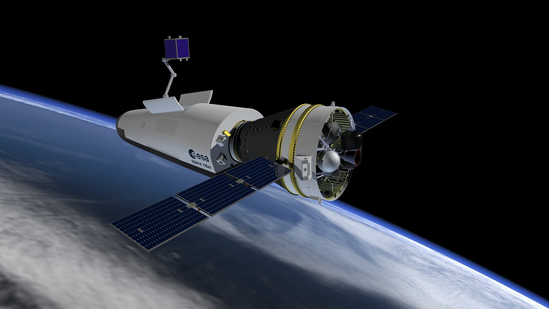Space
The Plan Safe factor
Our Services
Safety Engineering and Assurance
The Plan Safe team are experts in Safety Engineering and Assurance. We work with your engineering team to develop pragmatic and solution focussed safety programs, so you can focus on delivering a great product. We develop clear safety arguments using goal structuring notation and implement industry-standard techniques like Functional Hazard Analysis and Fault Tree Analysis.

.jpg)
.jpg)
.jpg)
Our Team
Our Work
Hypersonic vehicle launch permit
Australian hypersonic vehicle company
Ground Risk Assessment on Hypersonic vehicle’s filling ground operations
The Challenge
The leading Australian hypersonic vehicle company required detailed safety and regulatory compliance services, and support for approvals required from NASA to operate their vehicle’s mission from the NASA’s Wallops Range in Virginia USA. The brief also required a safety assessment to demonstrate compliance with the stringent NASA range safety requirements.
What We Did
Plan Safe team has extensive experience in conducting risk assessment and demonstrating compliance with space range safety standards, including the NASA’s Wallops Flight Facility Range Safety Manual (GSFC-STD-8009) and associated range safety standards (e.g. Space Systems COPV standard – ANSI/AIAA S-081B-2018).
Our team conducted the risk assessment from ground hazardous operations, as follow:
· conducting a systematic hazard identification during each phase of the ground operations (using Bow-tie methodology), with associated controls.
· Prepared and facilitated hazard identification Workshop with SMEs to review/identify hazards, controls and assign risk ratings, incorporating relevant outcomes into the HAZOP worksheet.
· Conduct a detailed research of the applicable range safety requirements applicable in the spaceport targeted for launch operations, evaluating the compliance of the hypersonic vehicle propulsion system to those range requirements, providing guidance and recommendations to achieve compliance based on track record experience in space activities licencing and range safety standards compliance.
· Produce the Propulsion system’s Hazard Assessment Management Report, with a qualitative argument supporting that the risk associated to the vehicle’s ground activities are adequately safe and comply with applicable range safety standards.
%20copy.jpg)
The Outcome
Plan Safe successfully produced the safety artefact required to obtain the hypersonic vehicle’s launch permit from the NASA Wallops Range. Moreover, the rigorous requirements of the NASA’s Wallops Flight Facility Range Safety Manual and associated range safety regulations/standards was incorporated into the vehicle’s design, testing and operations.
Spaceport Licensing and Feasibility Studies
Australian Spaceport
Range Safety Expertise
The Challenge
An Australian Spaceport operator required strategic advice to undertake the licensing and feasibility studies required for the development of a spaceport (i.e. site selection, exclusion zones, licensing process...).
What We Did
Plan Safe resources provided independent Range Safety expertise and delivered strategic advice on:
- Spaceport licensing activities required
- Feasibility studies required for orbital launch facilities, as well as Range Exclusion zone assessment(s)

The Outcome
Plan Safe successfully delivered range safety expertise enabling the licensing and selection of the most adequate site to settle the private orbital launch facility.
Australian Spaceport licensing
Space Client
Range Safety Plan Development
The Challenge
The leading Australian space rocket company required detailed systems safety engineering and aerospace licencing/regulatory expertise to demonstrate compliance with the stringent Australian Space Agency standards to obtain a Launch Facility Licence and operate their launch facility.
What We Did
Plan Safe resources produced and reviewed relevant artefacts required for granting Bowen Orbital Spaceport launch facility licence (e.g. range safety plan). Develop range safety plan in compliance with customer’s project requirements, the Australian Space Agency standards and range safety requirements. Support regulatory engagement activities as part of the Launch Facility Licence application.

The Outcome
The first launch facility licence for an orbital launch facility in Australia has been granted to the client in March 2024 for its Bowen Orbital Spaceport, enabling to prepare and continue readiness for launch of its Medium Sized Rocket (i.e. Eris).
Space-based air traffic surveillance
Space Client
Reduced separation minima Safety Case
The Challenge
Due to the growth in air traffic and the need to increase its airspace capacity in the Asian Pacific region, the Air navigation service provider required the development of a Safety Case enabling the implementation of reduced separation minima through the use of space-based air traffic surveillance.
What We Did
Plan Safe have been engaged to ensure the safe transition to reduced separation minima in the Indian airspace through the use of space-based ADS-B. Plan Safe provides experienced safety engineers to ensure that the new Indian airspace separation minima are compliant with applicable air traffic regulations and demonstrate that the operational risks are managed to levels that are As Low As Reasonably Practicable (ALARP).
Plan Safe activities include:
· Defining a tailored safety management approach and developing the safety argument (using Goal Structuring Notation)
· Conducting regulatory research to identify the applicable standards/regulations (ICAO, Eurocontrol, National regulations…), elaborate a detailed mapping with interactions between those regulations, index all relevant requirements into a compliance matrix and collect relevant evidence to demonstrate compliance.
· Performing hazard identification activities to demonstrate risks are managed as ALARP
· Developing the safety case providing the overarching safety argument
· Stakeholder engagement to ensure supporting evidence will be delivered on due diligence for the safety case approval.

The Outcome
The client was able to start implementing reduced separation minima through operational trials and engage with the national aviation safety regulator to obtain relevant approvals.
Space Object Re-entry and Landing Authorisation
European Space Agency
ESA Space Rider
The Challenge
Plan Safe personnel have extensive experience working on return authorisation application, in the European space sector, working in close coordination with the Space and Civil Aviation regulatory bodies for ESA’s first orbital system, Space Rider, reentering Earth atmosphere and landing on European soil. One of the main challenges associated to this return mission was the gaps in the applicable space law and associated regulations to carry out such return and landing activity.
What We Did
Plan Safe Personnel led the engagement with international and national space agencies, as well as aviation safety authorities and diplomatic engagement with overflown countries to successfully define the applicable safety requirements and agree on the required authorisation process for ESA’s Space Rider re-entry and landing mission.
Plan Safe team contribution successfully enabled:
- defining the strategy to ensure the safety of over-flown population during the sub-orbital part of the re-entry with a black-out phase (due to plasma)
- setting-up the strategy to safely terminate the flight during the re-entry (i.e. specific termination rules, definition of range exclusion zones)
- conducting the trade-off for landing sites, with the most appropriate location factoring in the key decision factors (distance to populated area, to the coast, topography, suitability for post-landing activities…)
- agreeing on the process to engage with over-flown third-party countries to seek for their approval for this re-entry (due to the current gap in international airspace FL600+regulation).

The Outcome
- Research of applicable space policy for the return and landing of this lifting body, engaged with international civil aviation, space and government regulatory bodies to develop space policy options for this specific mission, which led to the amendment of the French Space Act.
- Development of application(s) to acquire the return authorisation for Space rider mission.
Lunar Mission Radioisotope Power Systems
European Space Agency
ESA Lunar Lander Programme
The Challenge
To end Europe’s current dependence for radioisotope heat and power systems needed for exploration of the outer Solar System. The project focuses on enabling first-of-a-kind European supply of radioisotope heat and power systems for future missions. In the absence of regulatory framework defined to operate and launch radioisotope sources in Europe.
What We Did
Plan Safe resources were involved in enabling the radioisotope power system production as well as defining the regulatory framework to safely authorise the implementation and launch operations of radioisotope sources, including:
- Define the preliminary Nuclear Safety Requirements and Safety Management Plan for the implementation of radioisotope sources in Europe.
- Conduct research studies, review applicable NASA, National Nuclear Safety standards and regulations.
- Develop initial Nuclear safety rules, authorisation process for radioisotope sources, engaging with Space Agencies, nuclear safety SMEs.
- Identify impact associated to new technologies on both short and mid-term for the European eco-system, and examining the viability including operational impacts
.webp)
The Outcome
- Unlock the safe development of the first-of-a-kind European radioisotope heat and power systems supply and launch.
- Influence the update of the European Space regulations to incorporate novel nuclear safety process.
- Contribute to opening up the wider Solar System for exploration.


.jpg)








